
Ignatius van der Beken [1] (11 December 1689, Antwerp - 7 June 1774, Antwerp), was a Flemish genre, portrait and still life painter. He was a court painter of Johann Wilhelm, Elector Palatine. [2]

Ignatius van der Beken [1] (11 December 1689, Antwerp - 7 June 1774, Antwerp), was a Flemish genre, portrait and still life painter. He was a court painter of Johann Wilhelm, Elector Palatine. [2]
He became an apprentice in the Guild of St. Luke of Antwerp in the Guild year 1700-1701 as a pupil of Willem van Herp the Younger. [3] He resided in Düsseldorf from 1712 to 1716 where he was a court painter of Johann Wilhelm, Elector Palatine. [2]
He returned to Antwerp where he registered again as a master in the Guild of St. Luke in the guild year 1716–1717. Between 1722 and 1749 he served seven times as the dean of the Guild. [3] He is recorded in 1733 in Mainz as he portrayed the Prince-Bishop and Elector Philipp Karl von Eltz-Kempenich and other dignitaries. He was married to Geertrudis Elisabeth Meusses. [2]
He was the master of Clemens-Augustinus Everaerts and Guiglielmus Vasel. [2]

Van der Beken painted mainly genre scenes and merry companies as well as still lifes. He is also documented as having worked as a portrait painter but these works have been lost. He is known for several genre groups (four examples in the National Gallery of Denmark, Copenhagen). [2] These are executed in a limited palette and muted colors. [4]
Flower still lifes by him are close in style to that of Jan Baptist Bosschaert. [2]

Johann Wilhelm II, Elector Palatine of the Wittelsbach dynasty was Elector Palatine (1690–1716), Duke of Neuburg (1690–1716), Duke of Jülich and Berg (1679–1716), and Duke of Upper Palatinate and Cham (1707–1714). From 1697 onwards Johann Wilhelm was also Count of Megen.

Gonzales Coques was a Flemish painter of portraits and history paintings. Because of his artistic proximity to and emulation with Anthony van Dyck he received the nickname de kleine van Dyck. Coques was also active as an art dealer.

Eglon van der Neer was a Dutch painter of historical scenes, portraits and elegant, fashionable people, and later of landscapes.

Adriaen van der Werff was a Dutch painter of portraits and erotic, devotional and mythological scenes. He painted several works for the Medicis. His brother, Pieter van der Werff (1661–1722), was his principal pupil and assistant.
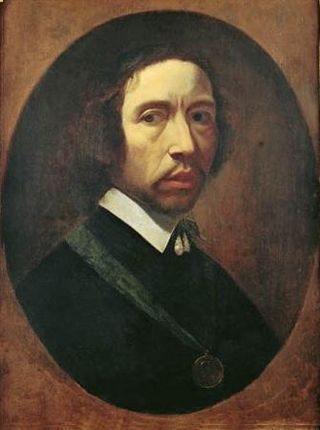
Job Adriaenszoon Berckheyde was a Dutch artist of the 17th century, active in Haarlem, Amsterdam, and The Hague.

Pieter Thijs, Peter Thijs or Pieter Thys was a Flemish painter of portraits as well as religious and history paintings. He was a very successful artist who worked for the courts in Brussels and The Hague as well as for many religious institutions. His work was close to the courtly and elegant style of Anthony van Dyck and his followers.
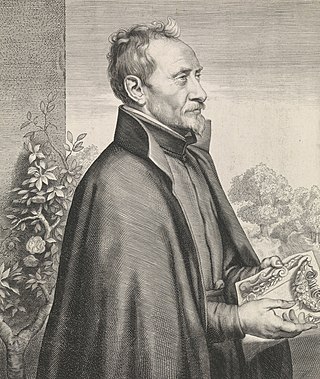
Daniël Seghers or Daniel Seghers was a Flemish Jesuit brother and painter who specialized in flower still lifes. He is particularly well known for his contributions to the genre of flower garland painting. His paintings were collected enthusiastically by aristocratic patrons and he had numerous followers and imitators.

Anthoni Schoonjans, nicknamed Parhasius was a Flemish painter known for his portraits as well as his history paintings. After training in Antwerp he had an international career, which saw him work in various countries in Europe including France, Italy, Germany, Austria, The Dutch Republic and Denmark. He was a court painter in Vienna, Copenhagen, Berlin and Düsseldorf.

Jan van den Hecke or Jan van den Hecke the Elder (1620–1684) was a Flemish Baroque painter, draughtsman, printmaker and engraver, mainly known for his still lifes, landscapes and battle scenes. After training in Antwerp, he spent time in Rome, where he had important patrons. After his return to Flanders, he worked for a while in Brussels, probably painting flower still lifes for Archduke Leopold Wilhelm of Austria, the Austrian governor of the Spanish Netherlands, before returning to work in Antwerp.

Jan van Nickelen, was a Dutch Golden Age painter.

Herman van der Mijn, or Heroman van der Myn, was an 18th-century painter from the Northern Netherlands.

Jacques Ignatius de Roore or Jacobus Ignatius de Roore was a Flemish painter, copyist, art dealer and art collector who worked in the Southern Netherlands and the Dutch Republic.

Adriana Spilberg, was a Dutch Golden Age painter active at the court of Johann Wilhelm, Elector Palatine.

Peter Ykens, was a Flemish painter mainly known for his history paintings and portraits. He regularly collaborated with specialist still painters and landscape artists for whose works he provided the staffage.
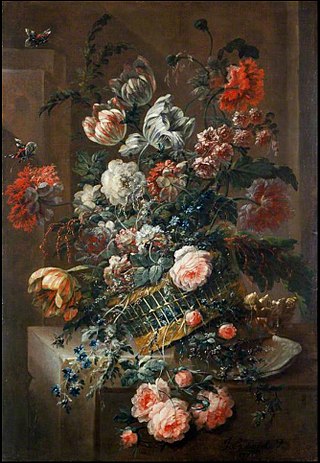
Jan Baptist Morel or Jean Baptiste Morel was a Flemish still life painter who specialized in flower pieces and garlands. He was a successful artist who worked in Antwerp and Brussels.

Peter Jacob Horemans or Peter Jakob Horemans was a Flemish painter of genre scenes, portraits, conversation pieces, still lives and city views. After training in Antwerp he was active in Germany where he became court painter. He was a versatile artist who worked in many genres and for a variety of aristocratic, religious and private patrons.

Johan Baptist Govaerts was a Flemish painter known for his still lifes and genre paintings. After training and working in Antwerp he worked as a court painter in Mainz.

Jan de Herdt, in Italy also called Il fiammingo was a Flemish painter and draughtsman. After training in Antwerp, he spent his entire career abroad, first in Northern Italy and later in Vienna and other cities in central Europe. He was mainly a portrait artist but also painted genre scenes as well as religious, mythological and allegorical subjects. He was part of a network of Flemish and Dutch painters working for the court, aristocracy and ecclesiastical institutions of central Europe.
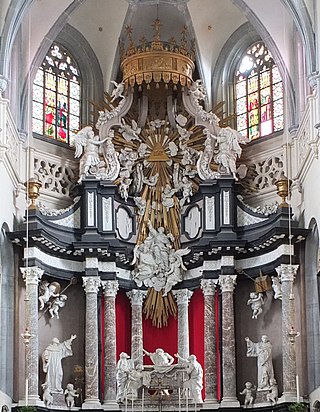
Willem Ignatius Kerricx was a Flemish sculptor, painter, draftsman, architect, engineer, playwright and author active in Antwerp in the first half of the 18th century. His sculptural works comprise mostly sculptured church furniture, individual sculptures, mainly statues of saints for churches and a few funerary monuments. His sculptural style is typical for the late Flemish Baroque while he shows a preference for Classicism in his architectural projects. He took over the large family sculpture workshop in Antwerp. As a painter he created both history paintings for churches and still lifes. He was also employed as an architect and engineer, mainly on reconstruction projects. In his youth, he composed a number of comedies and tragedies for the Antwerp theatre.
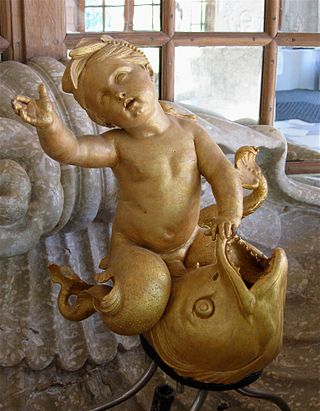
Guillielmus de GroforWillemorWilhelm de Grof was a Flemish sculptor, metal caster, stucco maker, frame maker and cabinet maker. After training in Antwerp he worked in Paris and Munich as court sculptor. In Paris he was a court sculptor to King Louis XIV and in Munich he was employed by the Elector Maximilian II Emanuel of Wittelsbach. He is known for his large scale equestrian portraits as well as small scale decorative sculptures. He was one of the great pioneers of Rococo art in Munich. His style combined the court style of Louis XIV with the exuberant Flemish Baroque, which had its roots in Rubens' works. He had an important influence on the development of sculpture in Bavaria and Vienna.